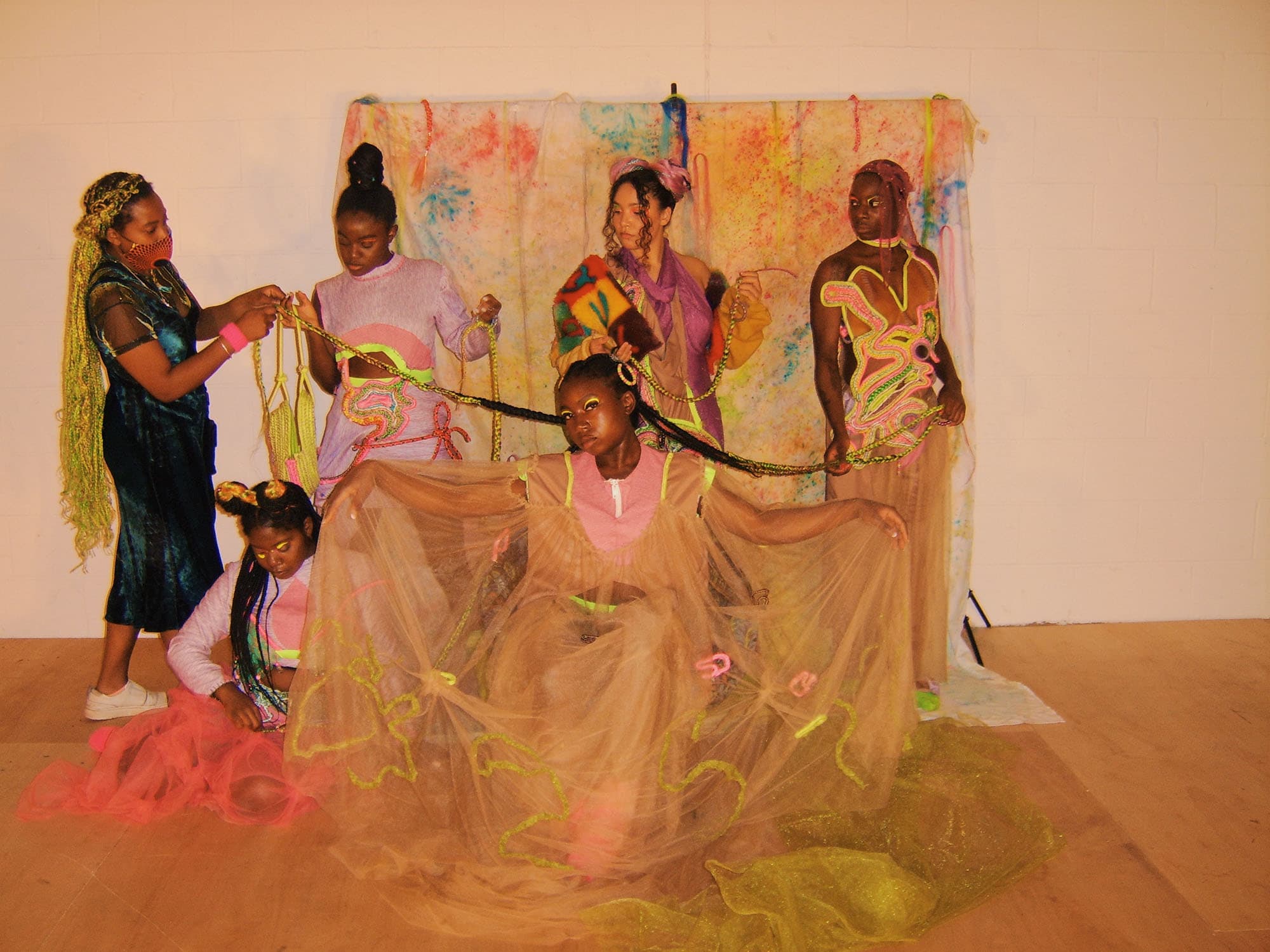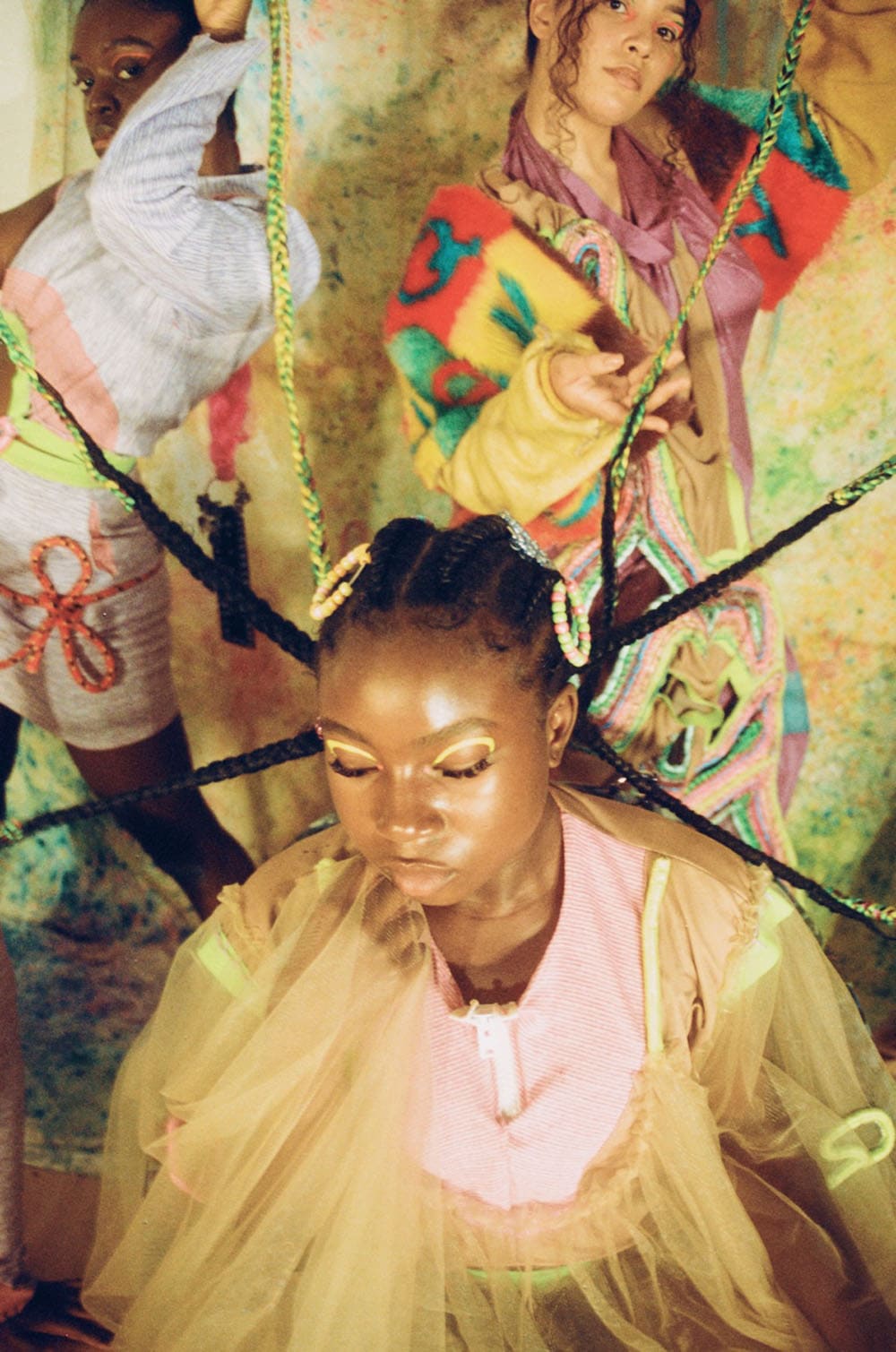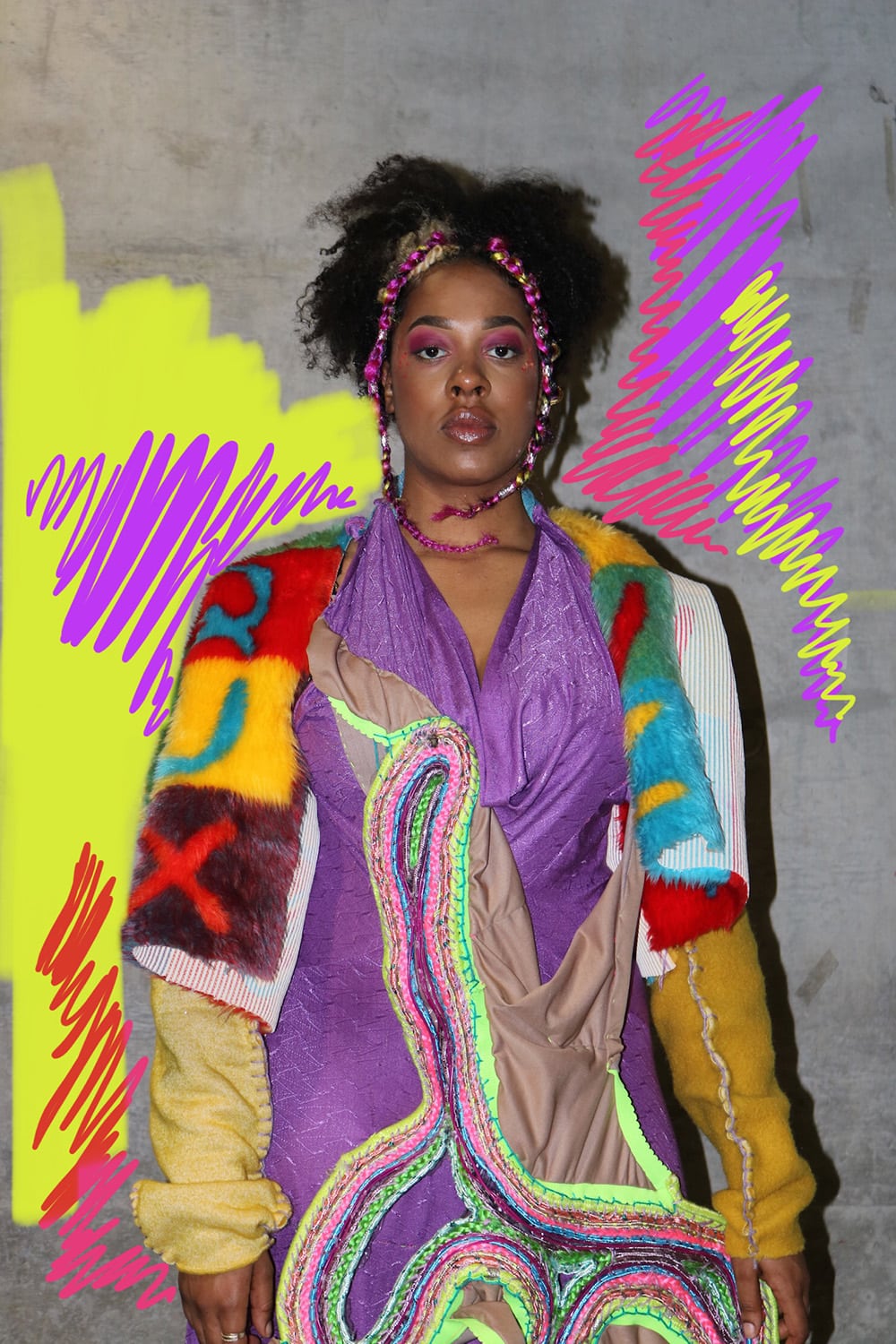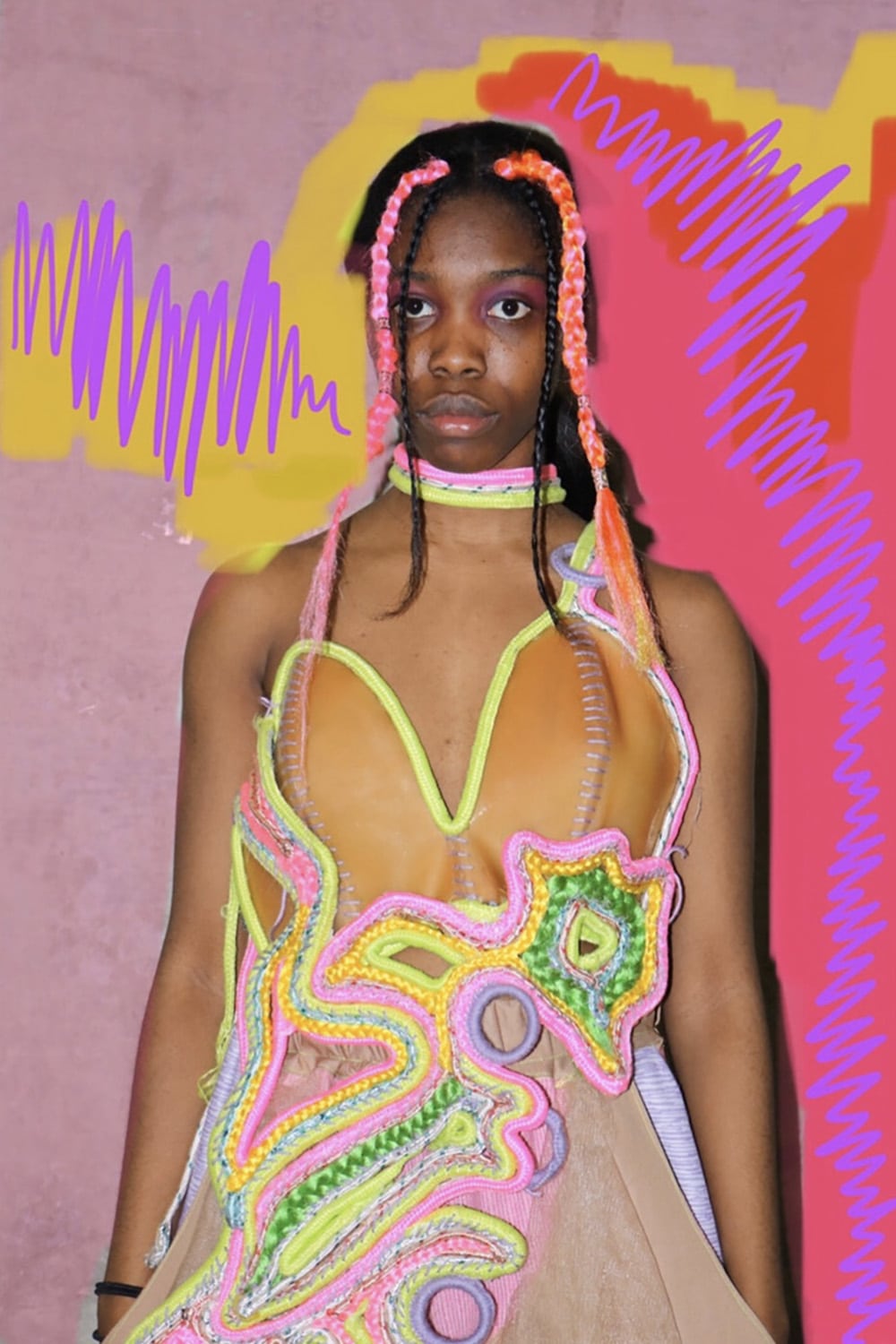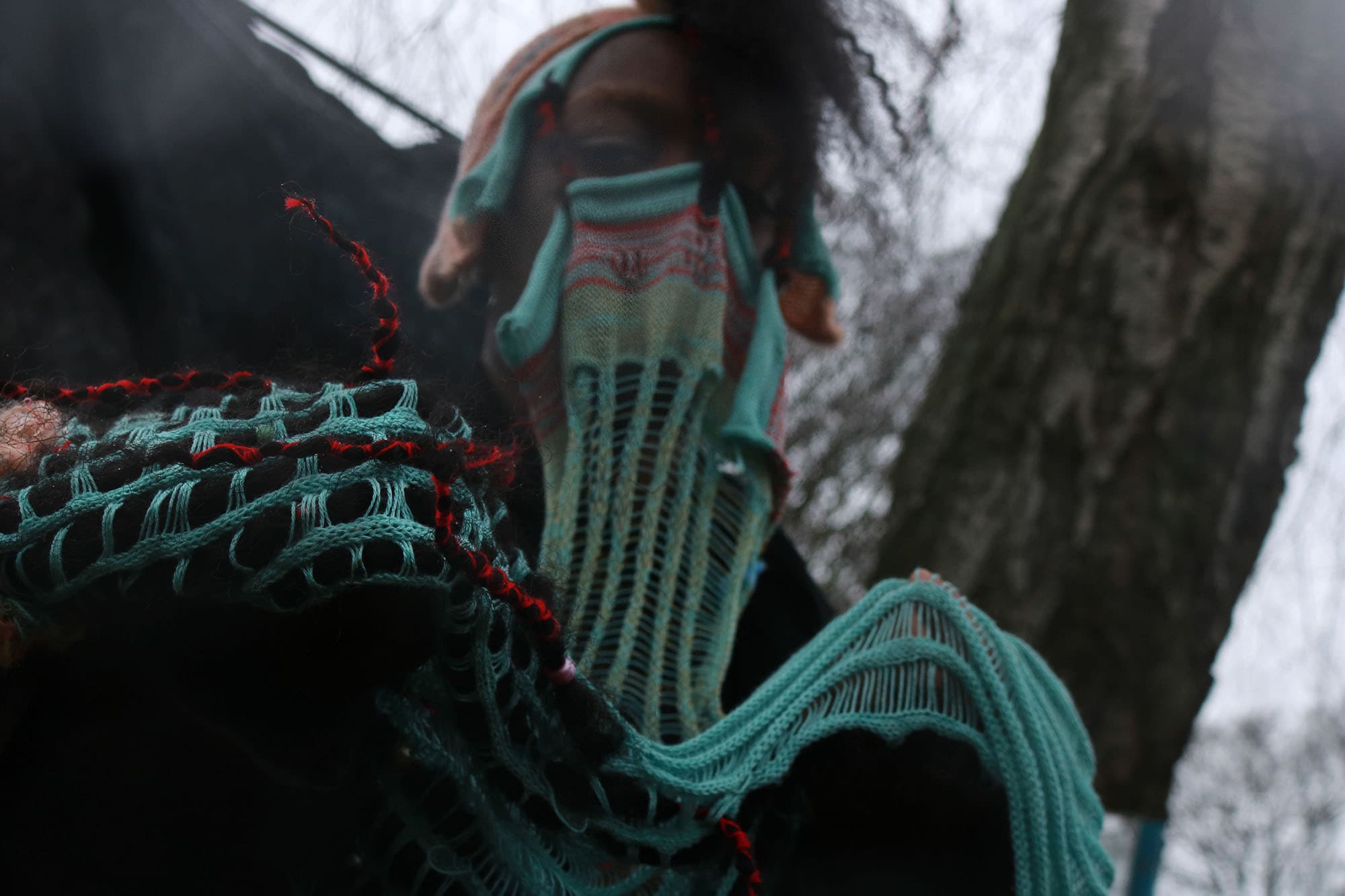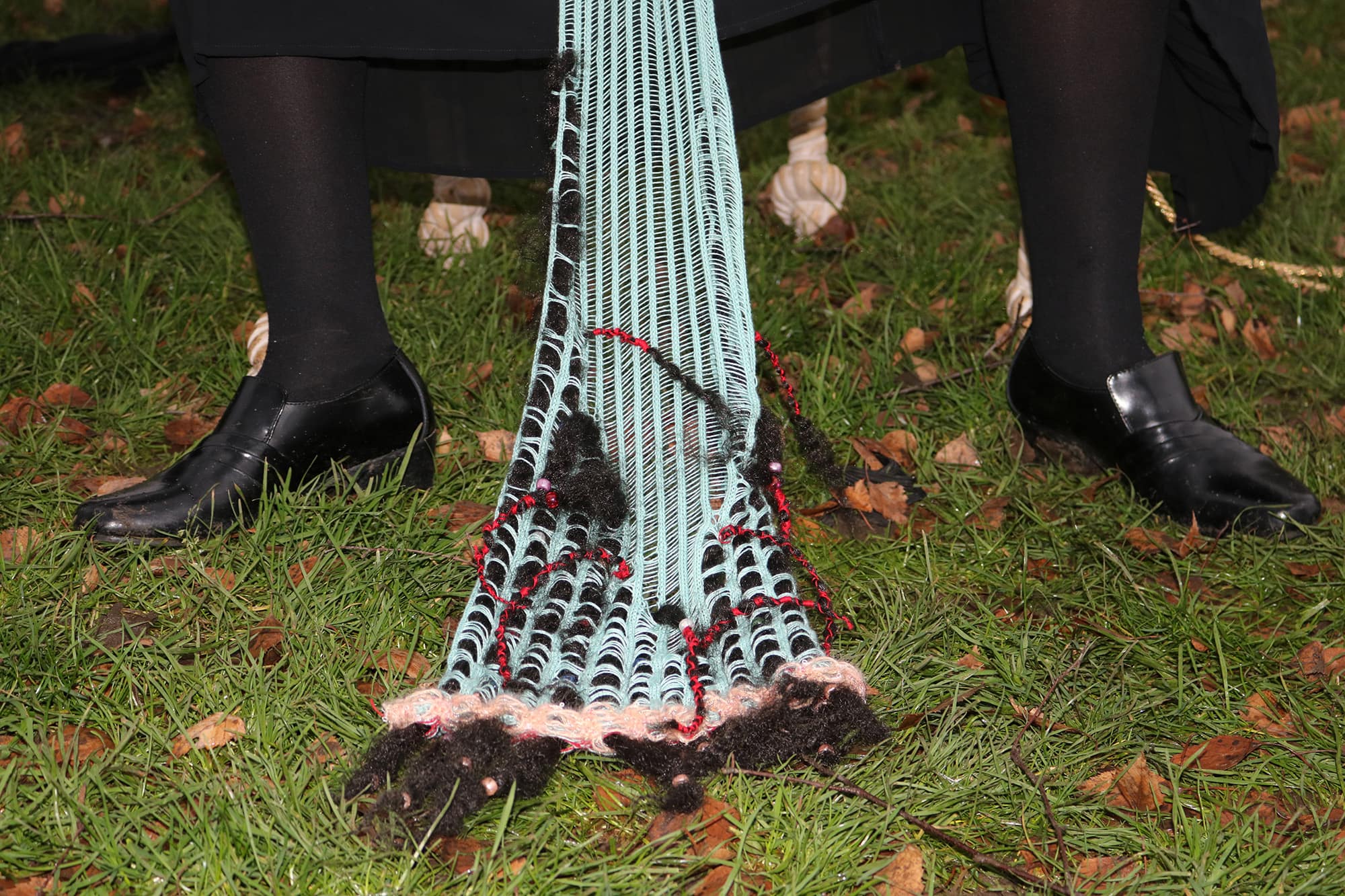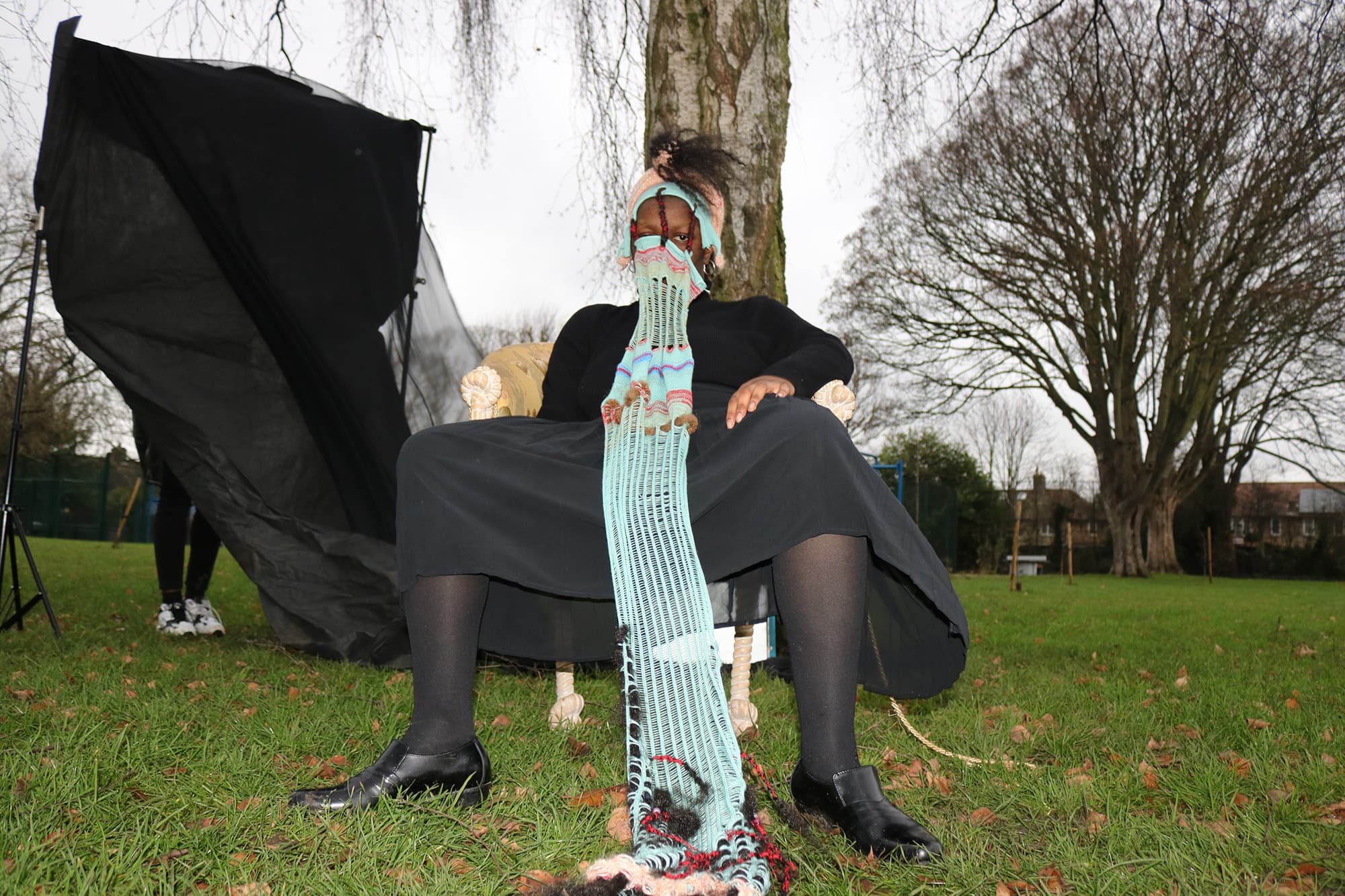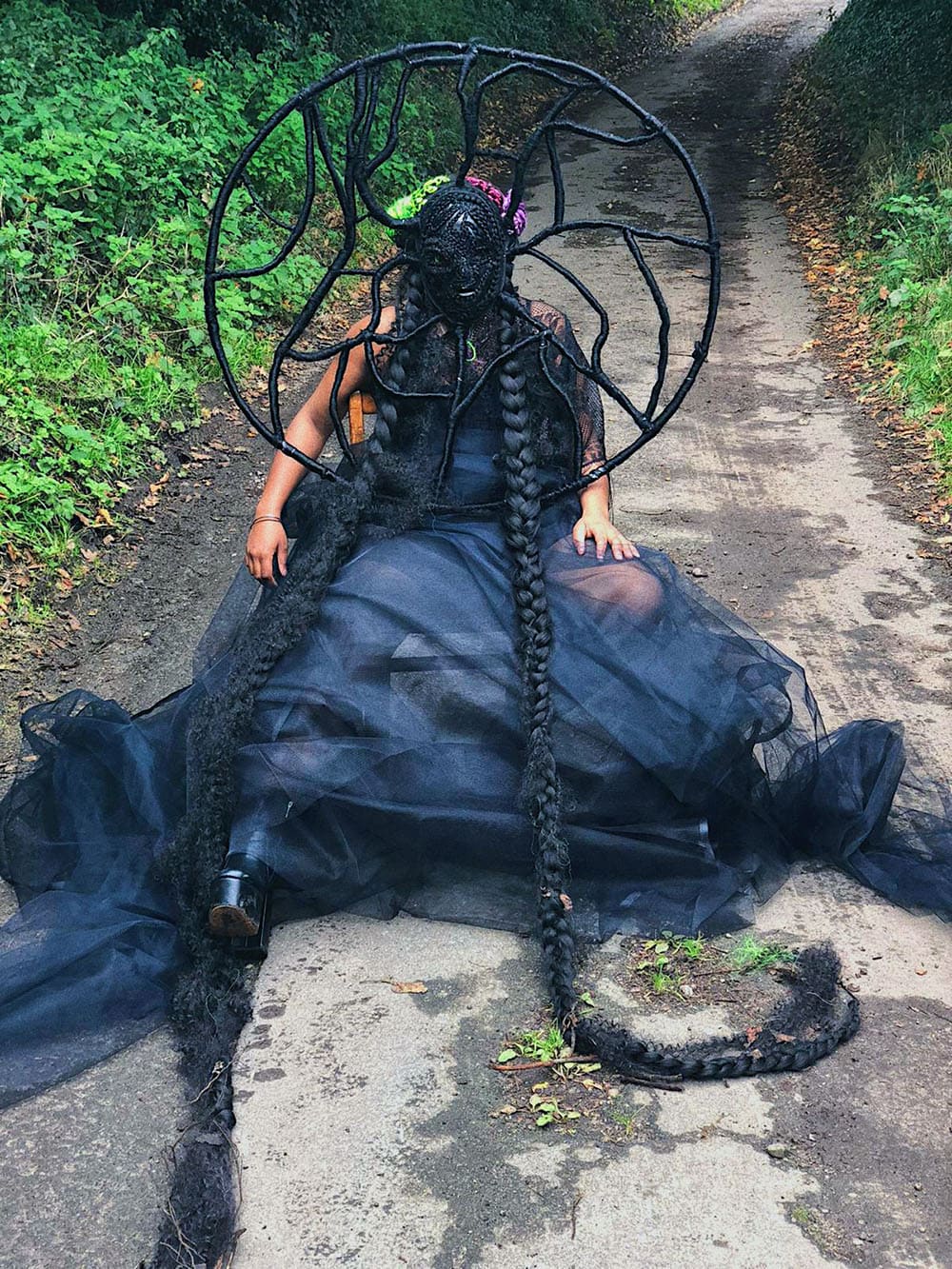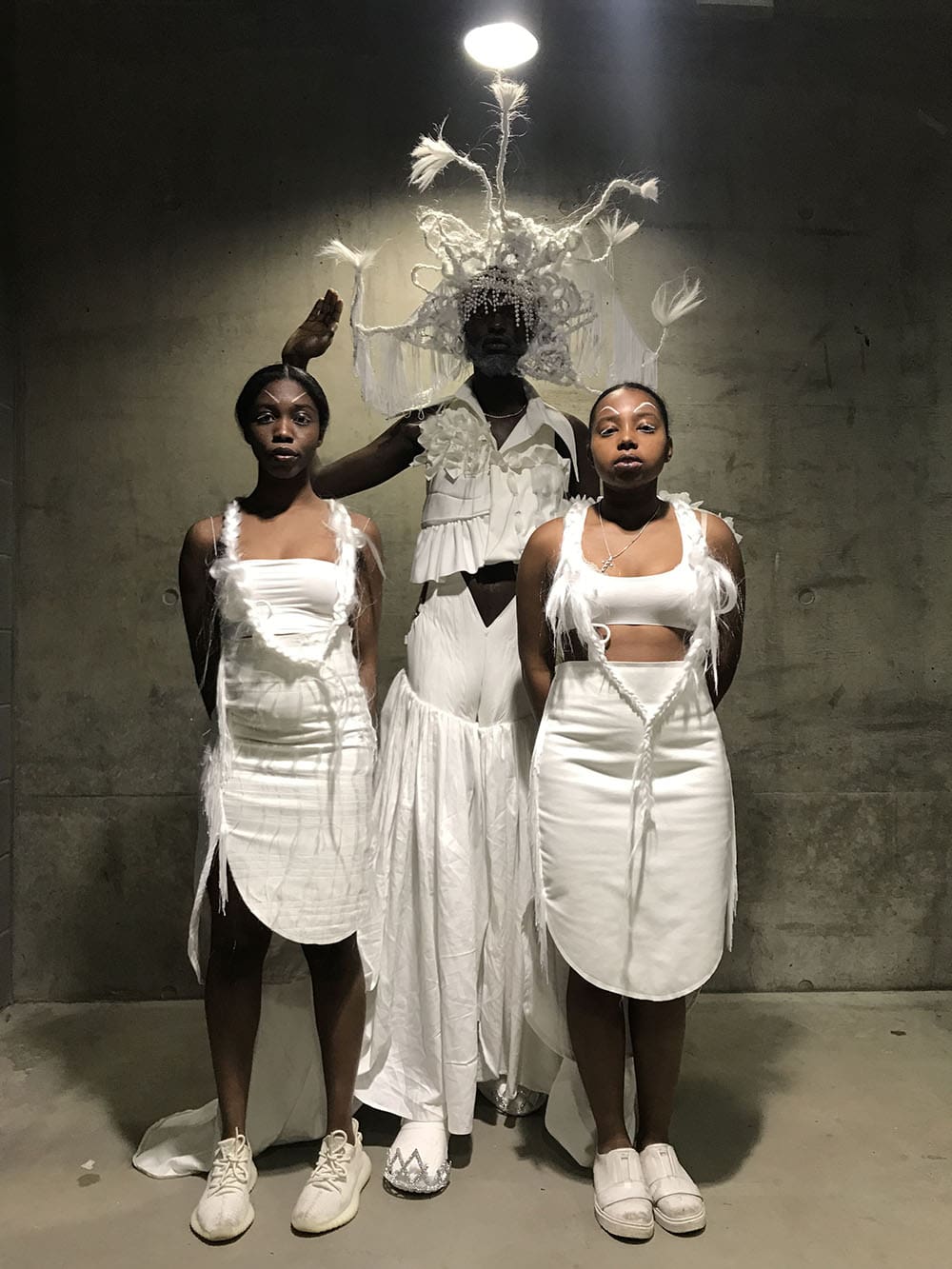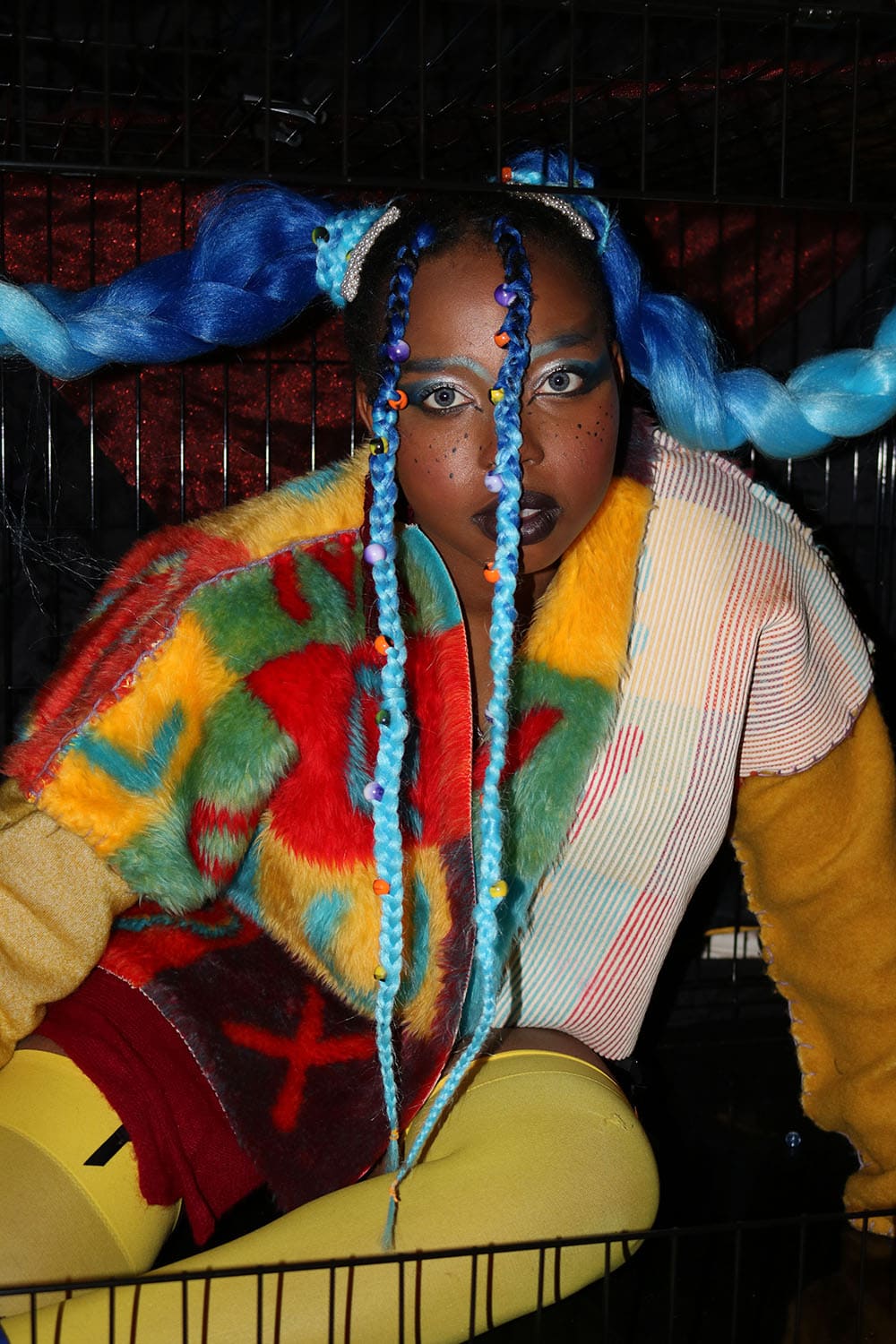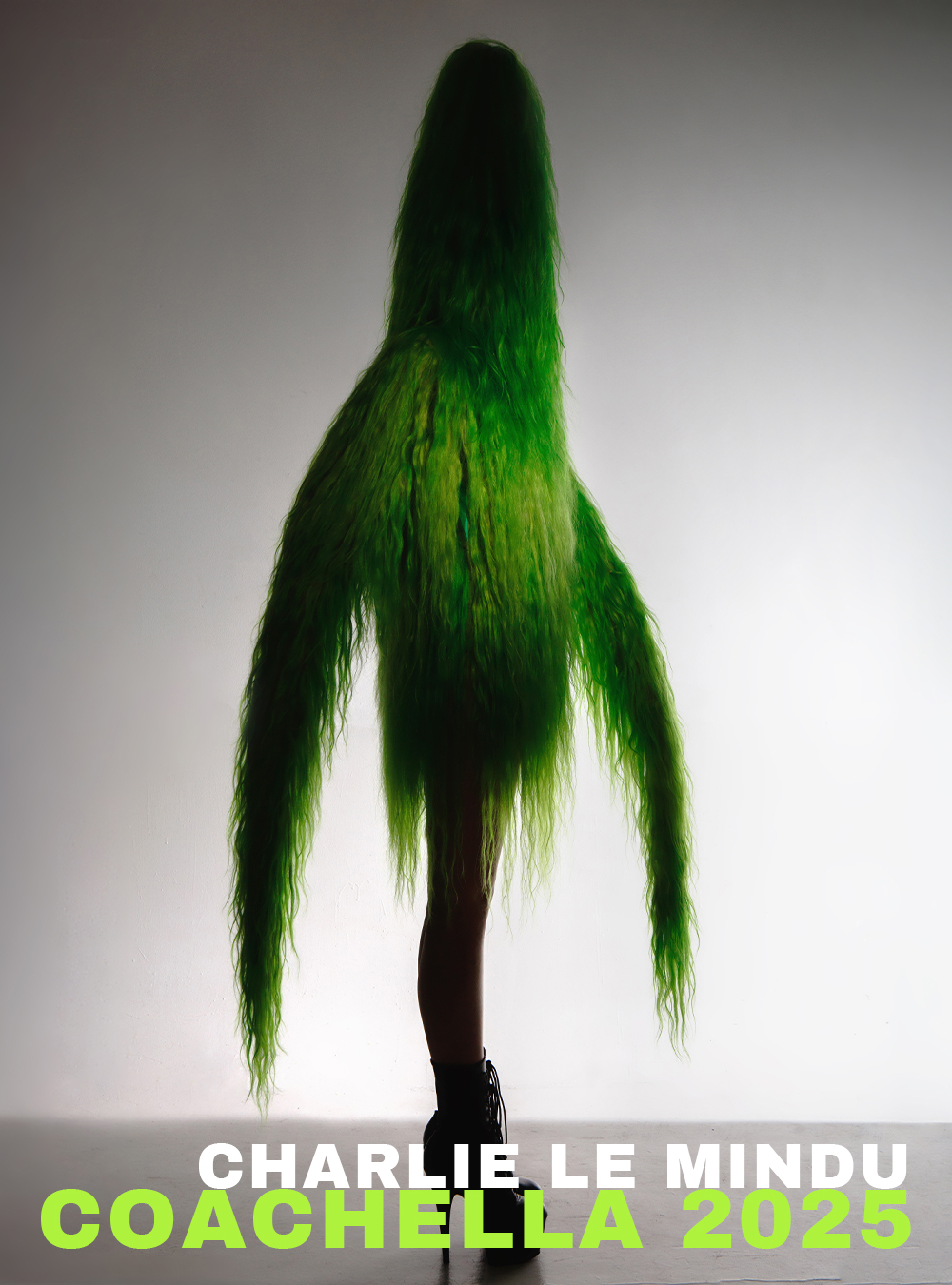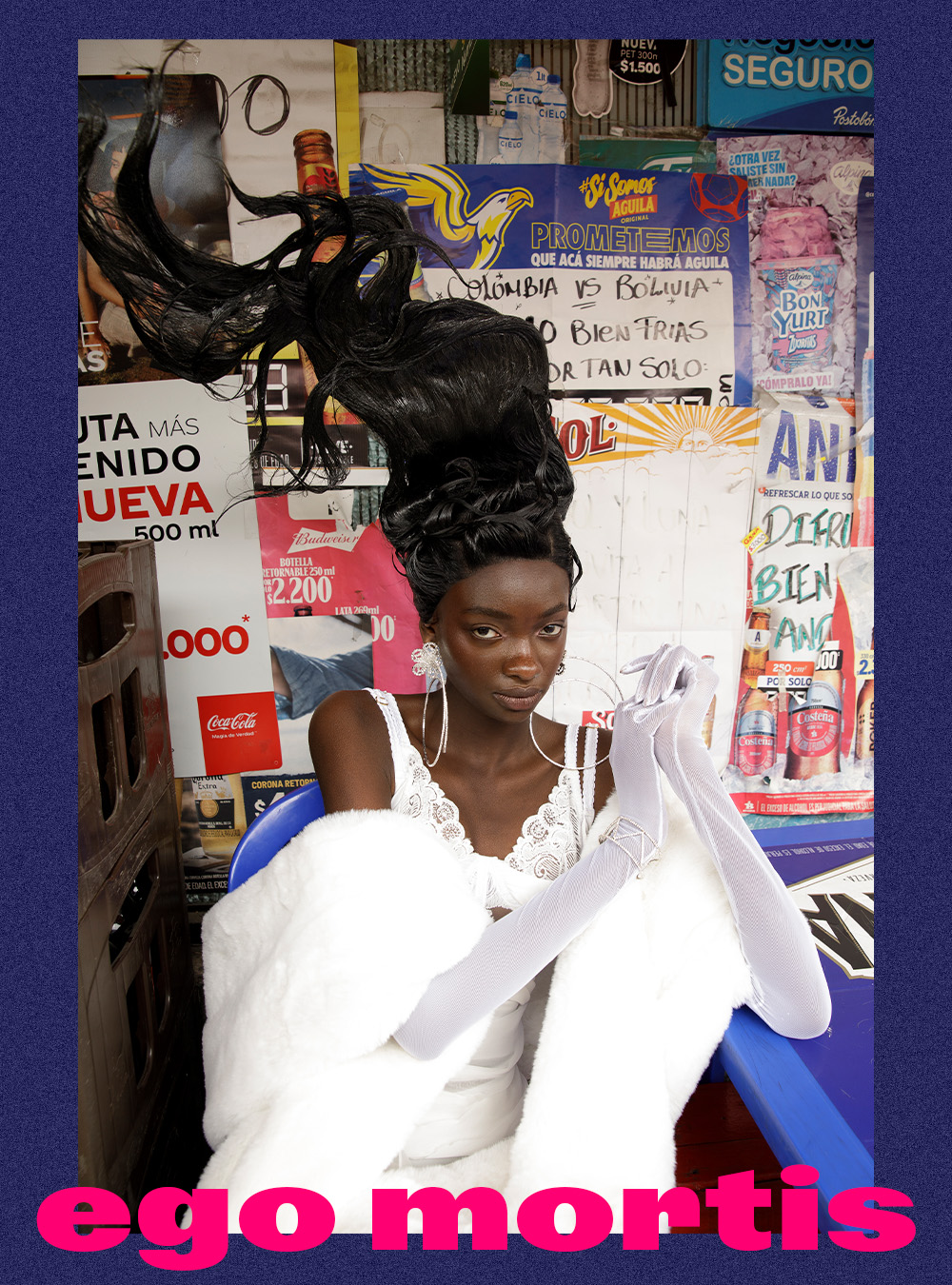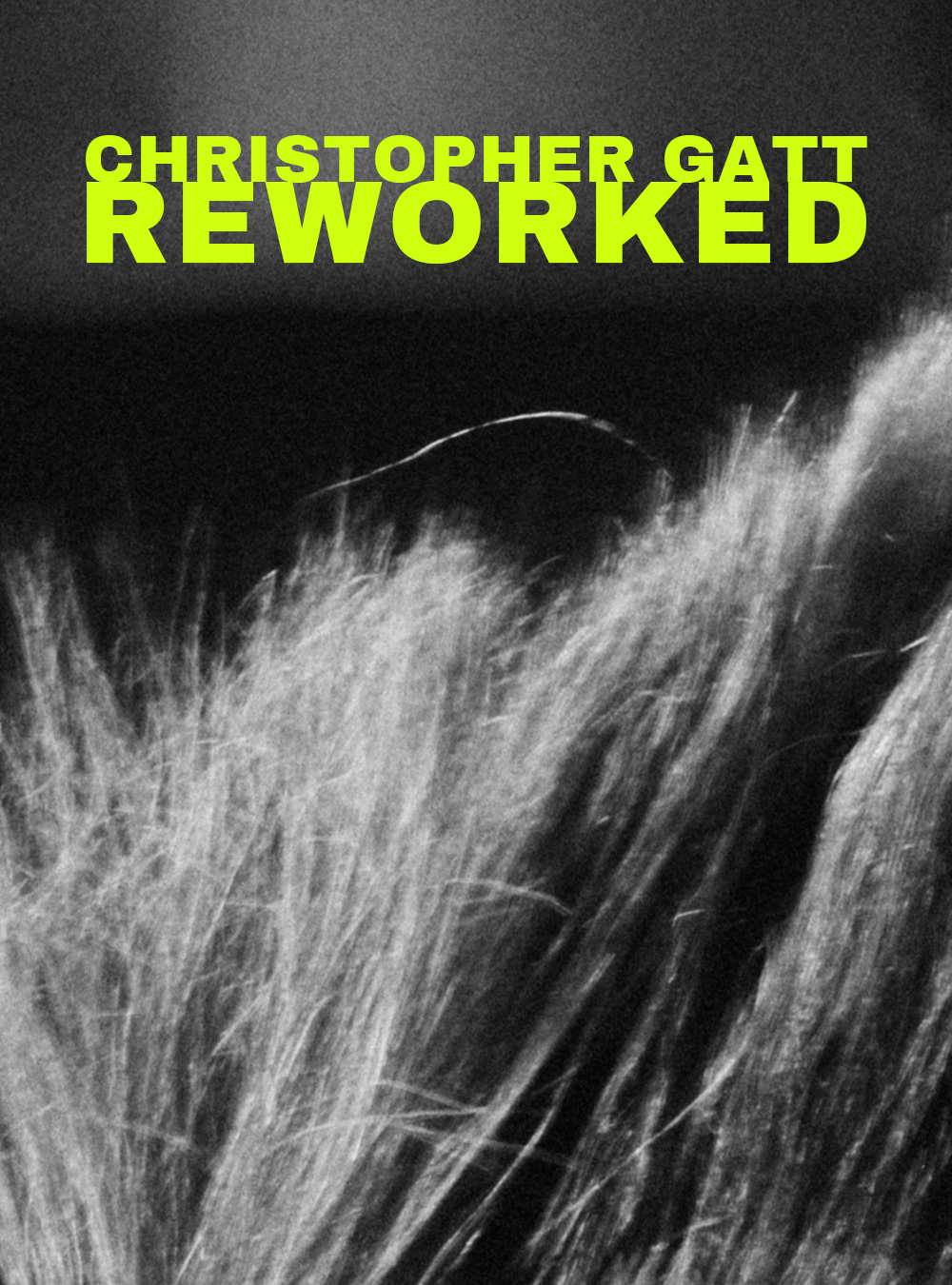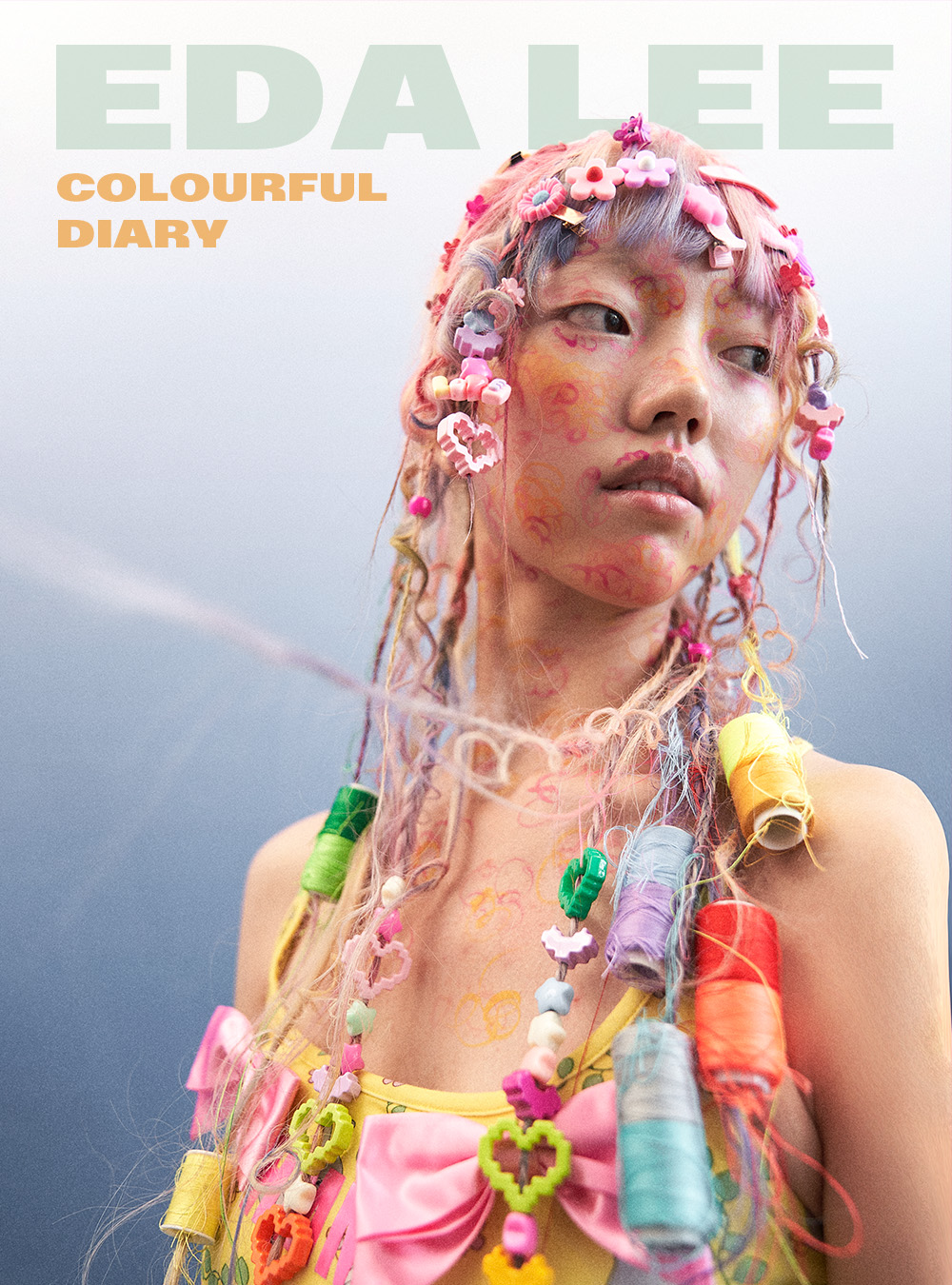PEOPLE: Shashamani is the emerging knitwear designer using hair to stitch Black joy, sisterhood and legacy into her garments
Designs + Hair: Shashamani
Photography: Courtesy of Shashamani and Asia Ahmed for A Look Into
Interview: Katharina Lina
From surface levels down to its very structure, hair contains our information; genetic, historic, symbolic. In her SS21 collection Knot, Shashamani Jackson incorporates hair into her designs demonstrating those same characteristics: taking pride in her heritage, resisting against a history of over-policing Black bodies, and, acting as both a catalyst and result of the two, symbolising Black joy. “Knot was birthed and solidified during lockdown, following a great time of racial and civil unrest. The beauty, that I wanted to convey through the story was that despite the darkness surrounding the world right now, there is still love, joy and sisterhood”, the emerging designer elaborates.
Fascinated by the endless creative possibilities of hair, the Wolverhampton-native, with help from her mum, started experimenting with colours and styles from a young age and quickly learned that beyond being complementary to, hair could become a part of an ensemble. Now a second-year knitwear fashion student at Central Saint Martins, Shashamani has channelled her unapologetically joyful vision into successfully fusing hair and fashion design, producing a radiant collection that “seeks to speak life into things.”
What is your relationship with your own hair like? When did you first become conscious of having a deeper interest in hair? When I was in primary school my mom used to send my sister and I to school with colourful yellow and white beads to match our school uniform with tin foil at the ends to stop them from coming out – a technique she learnt from her Grenadian heritage. So I was aware that hair didn’t only have one function but could be a tool to add to an outfit. My interest in hair steadily grew by the time I reached secondary school as I realised the way I wanted to wear my hair didn’t fit within the schools restrictions or my mom’s limited time in an evening where three heads had to be completed. Still, I tried my hardest to style and make my hair as unique as possible, I used to wear colourful bandanas to match my school uniform and if I was wearing braids I would have a new version everyday. It reached a point where my friends would keep illustrated records of all my daily styles in the back of their exercise books.
“The more I experimented with my hair, the more I felt that the head was a limited canvas, so I began looking at how I could use hair within my work and bring my two passions together”
Once I reached college, I suddenly had all this freedom, where no one could say that this style didn’t fit rules or standards. I sort of went overboard; I dyed it, I shaved it, had an Afro, wore a wig. Everything under the sun, I did, although not always well. I noticed though that the bolder it got, the more people became concerned with me looking natural or whether something was too synthetic. Which confused me a lot, because to me hair was something to play with, and as I continually changed it, I never bothered to choose natural colours. I thought everyone was already aware that it wasn’t from my own scalp.
The more I experimented with my hair, the more I felt that the head was a limited canvas, so I began looking at how I could use hair within my work and bring my two passions together. This has led me to the place I am now in my hair design journey, where I continue to wear bold and colourful styles that influence my work and how I carry myself.
A film collaboration between Shashamani and A Look Into, a publication and production company aiming to show young, under-represented work across the creative spectrum.
What comes to mind when you hear the word braids? When I hear the term braids, I think of legacy, I think of a painstaking technique that does not come easy to most, that has survived upheaval, genocide and changing culture and trends. Braids to me are like the backbone, they will always be with us even if they are under appreciated, they speak to the past as well as to the future. And right now I’m very interested in exploring what the future of braiding will look like.
Historically, hair in designs has held sentimental value for people; remembering loved ones in handcrafted Victorian hair jewellery for example. How does sentimentality play a role for you? For me, my hair and the styles that I chose is a testament to my own personal growth and how I have become more confident and at peace with myself. I went from wearing dark purple mixed with black to neon greens and pinks. The brighter my colours became the more they signified that I was different and that I was okay with being different. Now reaching 5 years of colourful braids, I’m at a place in my life where I don’t feel I need to dress the loudest to get my point across, and I want to look deeper into hair care rather than hair vanity which was where I was operating before. So now I’ve started this loc journey where I’m learning more about how my hair actually works, what it needs to be healthy.
“When I hear the term braids, I think of legacy, I think of a painstaking technique that does not come easy to most, that has survived upheaval, genocide and changing culture and trends”
How do you find working with hair as a material? And how did you overcome difficulties that came with it? In my research I began to look deeper into the way hairstyles are formed and the techniques that I valued, such as braids, which I wanted to incorporate into the looks. The biggest difficulty was using hair in a new way that was innovative but still sleek. Hair isn’t like any other art material, which you can hot glue gun on. I found the best way to use hair as a tool was to continue learning and practising how to do my own hair. The more comfortable I became doing these braiding styles on my own head, the greater the improvements I saw in my work. In my designs, I have created tapestry, by hand stitching hair and rope, as well as using hair in a binding or wrapping process. I still don’t think I have duly explored all that hair can do yet, but I’m excited to continue on this path.
What do you like to do when you’re not working on your designs? I find it peaceful to take care of my hair and if I’m at a creative block in my designs, I start braiding to see what ideas may come. Outside of creating, I’m very much a family-oriented person, so during longer gaps between projects I head home to the countryside and go on big family walks with my dog.
Tell us about your summer project headdress. Can you give us a rough idea of your process? With the headdress, this was my first time actively using black coloured hair rather than my neon colours. I wanted this headdress to represent something universal; I wasn’t trying to tell my own personal story, but the greater story of the pain and suffering the Black community was experiencing during this pandemic and throughout history. I was really inspired by the Nigerian Igba fans that used woven hair, and the idea that we all sort of put on a mask or a ‘brave face’ to face the world and get through whatever situation we’re in. The mask was created during lockdown so my materials were limited, what you see is a mixture of clothing hangers, leftover hair and tinfoil. The mask itself is braided but the external hair around the edges is wrapped around, again and again. I found the wrapping process quite therapeutic, almost like bandaging a soul.
How would you define beauty? How has your definition of beauty evolved throughout your life thus far? To define beauty, is a tricky question and an even harder thing to accept. I think we often trivialise the matter by saying beauty is in the eye of the beholder. But if you’re your only beholder then it’s up to you to find beauty, love, respect and joy in all your own features without waiting for anybody else to say so. To me beauty is about confidence, if you are confident and joyous in yourself then that inwards glow sort of transpires outwards and others recognise it. Before, I used to wait for the world to see my beauty, now I try to live everyday knowing I am beautiful in all my many forms, whether the world tells me or not.
“We often trivialise the matter by saying beauty is in the eye of the beholder. But if you’re your only beholder then it’s up to you to find beauty, love, respect and joy in all your own features without waiting for anybody else to say so”
We often find that people can perceive hair to be disturbing when it’s not attached to a head. Have you ever experienced this type of reaction in regards to you using hair in non-traditional ways? Do they? I don’t think I’ve ever received such a visceral reaction to my work. I think the most disturbed question I get asked is if it is real and whose hair is it, but they seem far more subdued when I tell them it is synthetic.
What is the essence of Shashamani garments? What do you want people to take away from your work? The essence of a Shashamani garment is unapologetic energy. My garments are designed for people to take on life and find joy in that. As a knitwear student, and having the ability to create my own textiles and fabrics, I feel I have more control and range over my garments from the very beginning so I always try to infuse an element of fun energy into the looks, whether it’s through bright colours or manipulating hair. There are so many stories that have not been told yet, I’d like to think I make garments from the untold perspective, one that seeks to speak life into things.
- ANTHROPOLOGY OF HAIR
- ANTHROPOLOGY OF HAIR
- ANTHROPOLOGY OF HAIR
- ANTHROPOLOGY OF HAIR
- ANTHROPOLOGY OF HAIR
